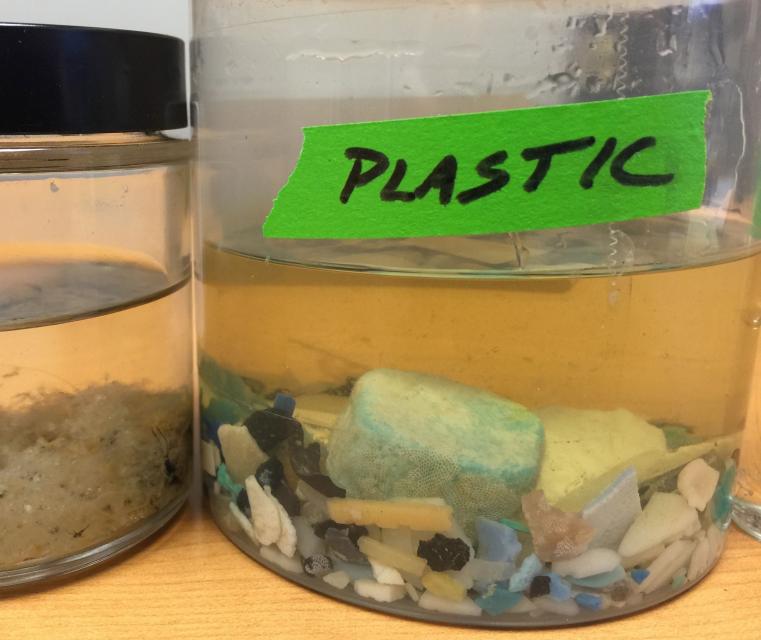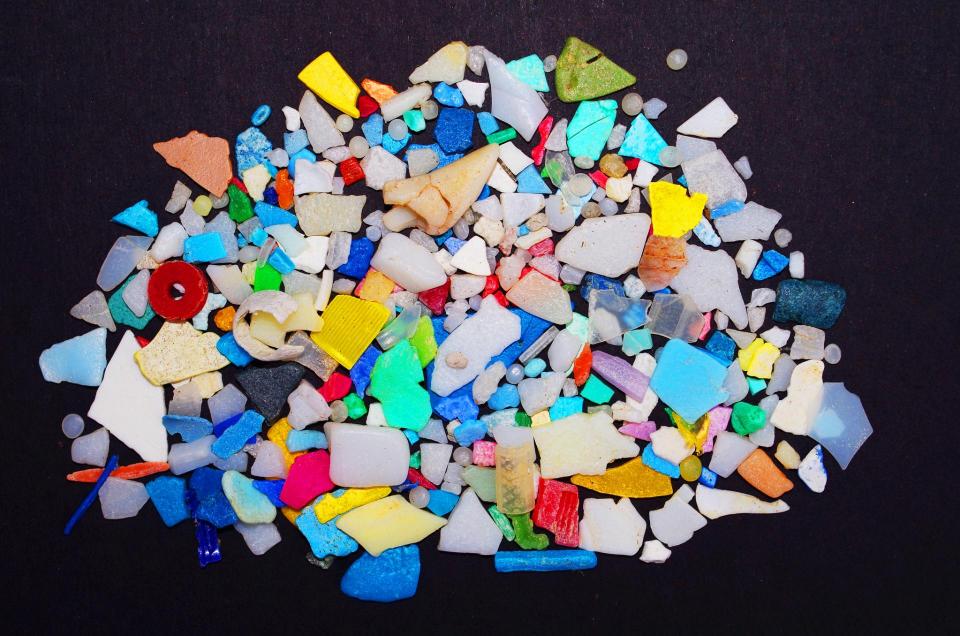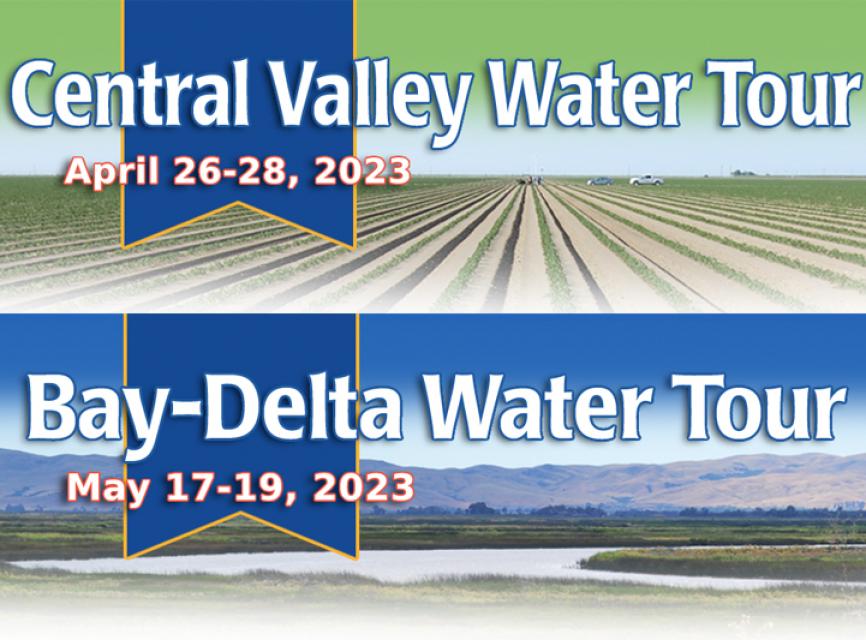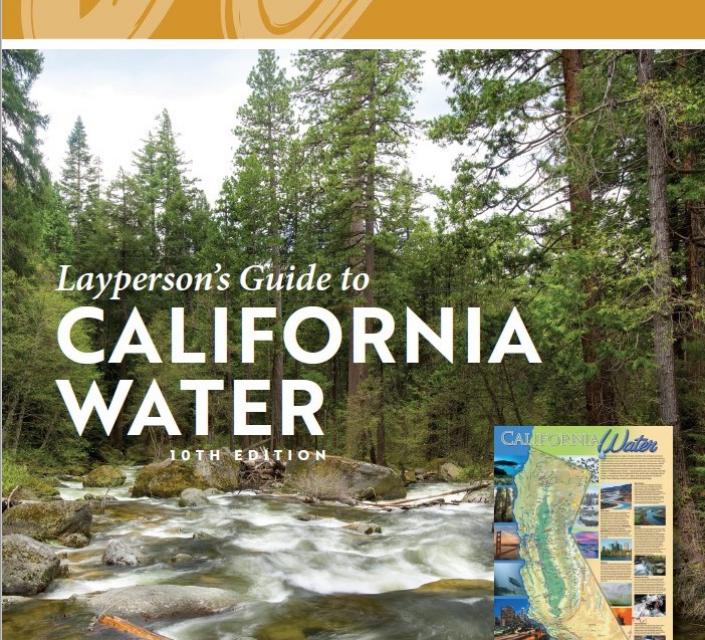WESTERN WATER-Testing at the Source: California Readies a Groundbreaking Hunt to Check for Microplastics in Drinking Water
Read our Western Water Notebook, Water Word of the Day and Five Don't-Miss Water Reads from Across the West
Dear Western Water readers:
 Tiny pieces of plastic waste shed
from food wrappers, grocery bags, clothing, cigarette butts,
tires and paint are invading the environment and every facet of
daily life. Researchers know the plastic particles have even made
it into municipal water supplies, but very little data exists
about the scope of microplastic contamination in drinking water.
Tiny pieces of plastic waste shed
from food wrappers, grocery bags, clothing, cigarette butts,
tires and paint are invading the environment and every facet of
daily life. Researchers know the plastic particles have even made
it into municipal water supplies, but very little data exists
about the scope of microplastic contamination in drinking water.
After years of planning, California late this year is embarking on a first-of-its-kind data-gathering mission to illuminate how prevalent microplastics are in the state’s largest drinking water sources and help regulators determine whether they are a public health threat.
Major water agencies tapped for the first round of testing already are gathering resources, figuring out how to take samples and readying public messaging strategies in case microplastics turn up in streams and reservoirs.
The latest Western Water article explores California’s groundbreaking program that could lead to the world’s first standard for microplastics in drinking water. Read full story here.
Water Around the West
Five don’t-miss articles from California and across the West:
Earth is warming up. So why is California having a record-breaking winter?: Jack Lee of the San Francisco Chronicle talks with scientists to connect the dots on how California’s chilly — and wet — winter is tied to climate change.
Mapping California’s ‘Zombie’ Forests: The New York Times’ Elena Shao details a new Stanford University study showing that young ponderosa pines and Douglas Firs are struggling to adapt to warmer temperatures across the Sierra Nevada’s slopes.
How a ‘cold shock’ of water from Lake Powell could thwart invasive Grand Canyon bass: The federal government is plotting emergency actions to keep predatory smallmouth bass from encroaching deeper into the Colorado River and preying on humpback chub and other native fishes, writes the Arizona Republic’s Brandon Loomis
Supreme Court case could reshape indigenous water rights in the Southwest: Writing for Civil Eats, Virginia Gewin highlights a closely watched tribal water rights case that goes before the Supreme Court next week.
Arsenic risk found in private wells in parts of the West: A new study revealed tens of thousands of private drinking water wells across California, Nevada and Utah likely contain unhealthy amounts of arsenic, reports Colton Lochhead for the Las Vegas Review-Journal.
Water Word of the Day
 The increasing prevalence of tiny
plastic particles called microplastics
in our environment is becoming a global concern. The particles,
which have been found on the ocean floor, Antarctic ice shelves
and in municipal wastewater, are highly mobile, distributing
easily and widely throughout surface waters and sediments. To
slow the spread, the federal government and a variety of states
like California have enacted laws regulating the use of
microbeads and microplastics. You can read more about
microplastics and other water-related issues in Aquapedia, our
free online water encyclopedia.
The increasing prevalence of tiny
plastic particles called microplastics
in our environment is becoming a global concern. The particles,
which have been found on the ocean floor, Antarctic ice shelves
and in municipal wastewater, are highly mobile, distributing
easily and widely throughout surface waters and sediments. To
slow the spread, the federal government and a variety of states
like California have enacted laws regulating the use of
microbeads and microplastics. You can read more about
microplastics and other water-related issues in Aquapedia, our
free online water encyclopedia.
At the Foundation
 Registration is now open for two of
our spring water tours — the Central Valley
Tour, April 26-28, and our popular
Bay-Delta Tour,
May 17-19. The Central Valley Tour focuses on the San
Joaquin Valley, which is facing challenges after years of
drought, dwindling water supplies, decreasing water quality and
farmland conversion for urban growth. The Bay-Delta Tour
traverses the Sacramento-San Joaquin Delta, a 720,000-acre
network of islands and canals that supports the state’s water
system and is California’s most crucial water and ecological
resource. Check our Water Tours
page to learn more about each tour and find out
where else we’re going in 2023.
Registration is now open for two of
our spring water tours — the Central Valley
Tour, April 26-28, and our popular
Bay-Delta Tour,
May 17-19. The Central Valley Tour focuses on the San
Joaquin Valley, which is facing challenges after years of
drought, dwindling water supplies, decreasing water quality and
farmland conversion for urban growth. The Bay-Delta Tour
traverses the Sacramento-San Joaquin Delta, a 720,000-acre
network of islands and canals that supports the state’s water
system and is California’s most crucial water and ecological
resource. Check our Water Tours
page to learn more about each tour and find out
where else we’re going in 2023.
Water Academy
 Perhaps no resource is as vital to
California’s way of life as water. Due to the state’s
increasingly unpredictable climate, long-range planning and
conservation of water supplies is critical to making it through
droughts, which are becoming longer and more intense. Conversely,
as this winter has shown, the rivers that bring prosperity to
California also can bring destruction when they fill with
rainfall or snowmelt and burst over their banks. Check out the
10th edition of our Layperson’s
Guide to California Water for a breakdown of the
state’s water use and development history.
Perhaps no resource is as vital to
California’s way of life as water. Due to the state’s
increasingly unpredictable climate, long-range planning and
conservation of water supplies is critical to making it through
droughts, which are becoming longer and more intense. Conversely,
as this winter has shown, the rivers that bring prosperity to
California also can bring destruction when they fill with
rainfall or snowmelt and burst over their banks. Check out the
10th edition of our Layperson’s
Guide to California Water for a breakdown of the
state’s water use and development history.








